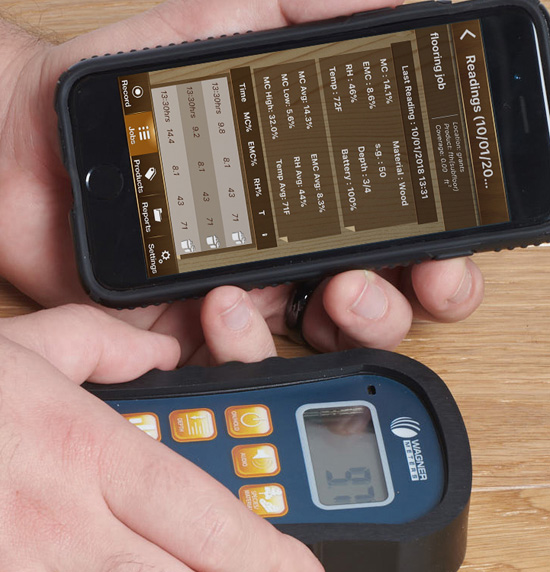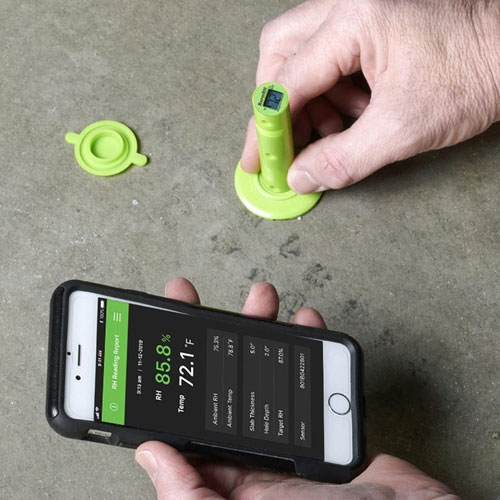Save Your Floor, Save Your Money, Save the Environment

Climate change has become a huge public policy issue in recent years. By 2024, nearly 7 in 10 Americans said they were worried about global warming, and the number of concerned citizens continues to grow. As a result, in both commercial and residential construction, people increasingly want to make choices that minimize energy usage, reduce greenhouse gas emissions, and are generally good for the environment.
Count Wood as Carbon Neutral
The fast-growing trend to “go green” carries over into the options people wish to look at in choosing flooring materials. Interestingly, popular types of flooring, such as vinyl or laminate, do not compare well to wood flooring when it comes to their carbon footprint. Wood is termed carbon neutral, meaning no net release of carbon dioxide during its production.
Indeed, trees absorb substantial carbon dioxide from the atmosphere as they grow. Bruce Lippke, professor emeritus in forest resources at the University of Washington, once remarked, “Every time you see a wood building, it’s a storehouse of carbon from the forest.” Not so for a lot of other building materials.
Pay Attention to the Waste Stream
Aside from making careful choices in the materials used in construction, going green on every flooring project also means being conscious about the amount of waste that’s generated. Keeping waste to a minimum means less energy involved in producing the materials that get used.
In many ways, waste is the bane of the construction industry. Waste on a typical construction project is estimated to be as much as 30 percent of the total weight of the building materials delivered to the site.
What about flooring failures? When they occur, as they sometimes do, they only add to the waste stream stemming from a construction project. Certainly, going green should mean paying attention to the risk factors that might contribute to a catastrophic flooring failure. In virtually every case, premature failure of a structure’s flooring can be prevented. It makes sense to give an eye to preventative measures because the aftermath of a failed floor not only entails considerable waste but a lot of expense as well in pinpointing the cause of the failure and making things right.
Without a doubt, excessive moisture is the most common cause of flooring failures, typically costing upwards of $1 billion annually. In addition, a portion of the estimated 17 million trees needed each year to manufacture wood flooring is wasted due to moisture problems. When you take steps to minimize the risk of a flooring failure, you save time, money, and materials, plus the energy required to produce those materials.
The Key Step in Preventing Flooring Failure

Due to its pinless design, the Orion 950 won’t mar the flooring with unsightly pin holes when measurements are taken.
What can be done to prevent a moisture-related flooring failure? The most important thing you can do is pay close attention to the moisture condition of the materials being used.
It is extremely easy to assess the moisture content of wood flooring and wood subflooring prior to its installation. And yet, the National Wood Flooring Association (NWFA) and other industry experts have estimated that at least 75 percent of all flooring installation failures—such as warping, cupping, cracking, shrinking, adhesive failure, gaps, and even mold and mildew growth—are the result of moisture issues.
Handheld moisture meters are typically the tool of choice for moisture measurements in wood flooring and wood subflooring. Just make sure you utilize a meter with proven accuracy and reliability. Inaccurate readings could lead to wrong conclusions, and this could result in a flooring failure plus the significant cost of tearing out and replacing flooring materials damaged by excessive moisture.
One great option is the Orion 950 handheld meter by Wagner Meters. It’s a new, technologically advanced device from a company that’s known for providing moisture measurement tools with outstanding accuracy. Due to its pinless design, it won’t mar the flooring with unsightly pin holes when measurements are taken.
Assessment of Concrete Subflooring

ASTM F2170 in situ concrete slab RH testing has been scientifically verified to produce the most accurate picture of concrete slab moisture at the time of flooring material installation.
Monitoring the moisture in the flooring itself is only part of the moisture story. It’s also vitally important to pay attention to the subflooring. Whenever flooring is to be installed over a concrete slab, realize that concrete can hold a substantial amount of moisture. Excessive amounts will likely impact the performance of the finished floor.
Water is an essential ingredient in concrete. Failure to use enough of it and concrete won’t cure properly and won’t yield the strength, hardness, and durability that makes it so valued in construction. Failure to allow the slab to dry sufficiently can also be a big problem.
After the initial pour, a concrete slab must dry to an acceptable level for a flooring installation to be successful. This means the flooring professional must properly assess the concrete’s moisture condition. This is not something that can be done by just looking at it or by taking a surface-type measurement, such as with a handheld meter. Lots of moisture remains hidden deep within the concrete, which requires using a measurement tool that can readily assess it.
Today’s tool of choice for concrete moisture measurement is the in situ relative humidity (RH) probe. Its development is based on decades of scientific research, which explains why it is known for its accuracy and reliability. The most popular and advanced of the available RH measurement devices is the Rapid RH L6 kit. It is simple and fast to use, making it extremely easy to get a good handle on the moisture condition of concrete subflooring.
A Win-Win-Win Situation
Because these days the devices available for measuring moisture in wood flooring materials and concrete are accurate, reliable, and simple to use, there’s really no excuse for risking a flooring failure due to moisture. This means every flooring professional and his clients can feel good about what they are doing to cut waste and save on energy and materials. Why have it any other way? Save your floor, save your money, save the environment!
Jason has 20+ years’ experience in sales and sales management in a spectrum of industries and has successfully launched a variety of products to the market, including the original Rapid RH® concrete moisture tests. He currently works with Wagner Meters as our Rapid RH® product sales manager.
Last updated on October 8th, 2024



